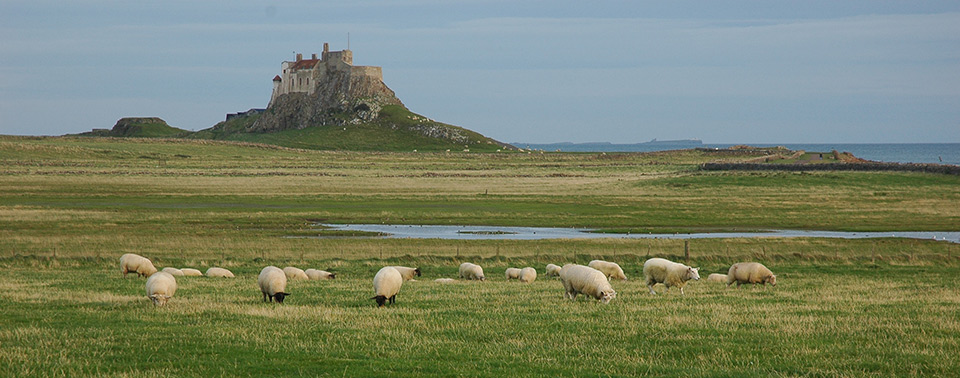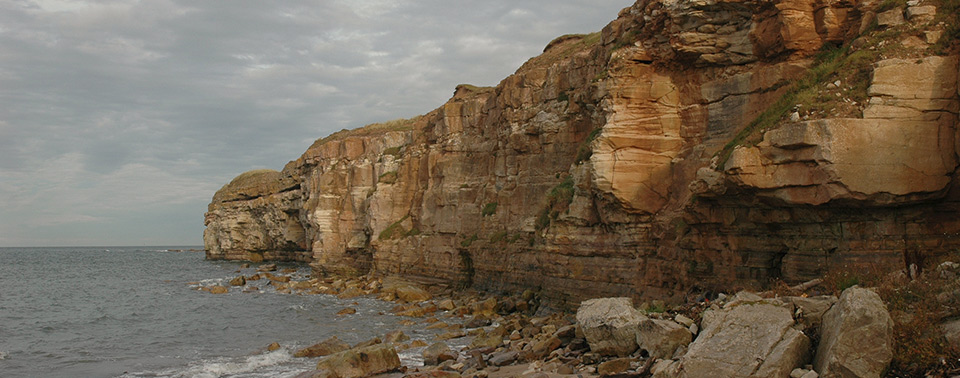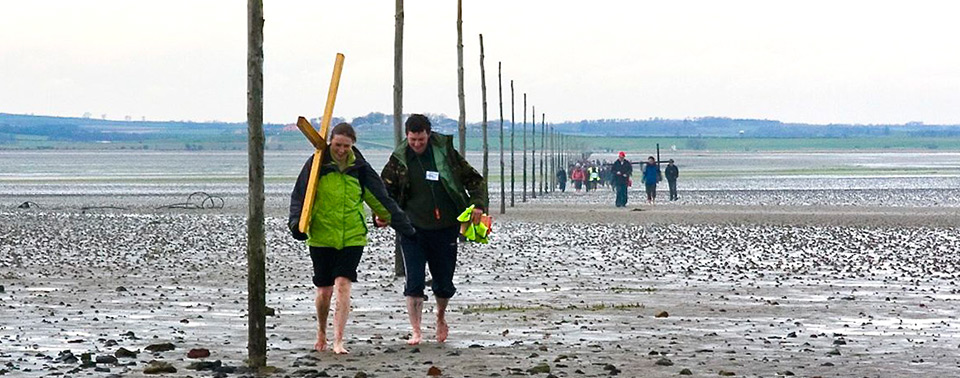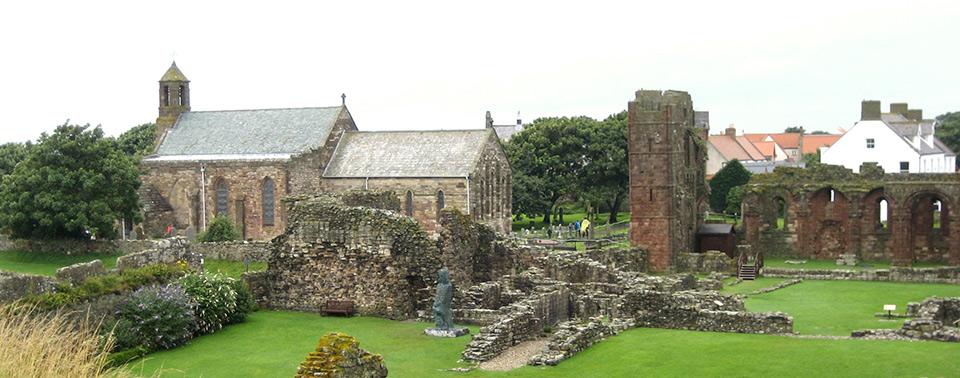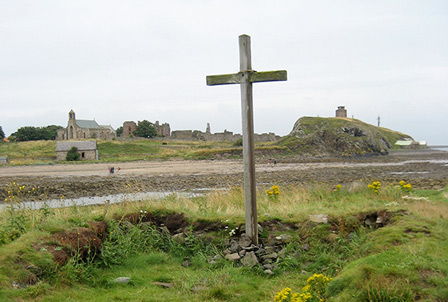Suíomh:
Is é an Oileán Naofa Lindisfarne agus bogaigh mhuirí mórthimpeall limistéar tábhachtach do ghnáthóga cósta agus éanlaithe fiáine geimhrithe. Tá sé ina Chríostaí naofa suíomh agus ionad oilithreachta ó AD 635 nuair a bhí sé ról lárnach mar "cradle" na Críostaíochta i dtuaisceart na Breataine. Measadh go raibh Ceann de na príomhchúiseanna le naomh Naomh Cuthbert mar cheann de Shasana 'caomhantóirí nádúr' an chéad agus tá sé fós ar an naomh is mó aitheanta sa cheantar. Tá chuid den oileán agus na bogaigh mórthimpeall Anaclann Dúlra Náisiúnta, cé go tithe an t-oileán féin sráidbhaile, foirgnimh stairiúla, roinnt eaglaisí agus ionaid Retreat. Le blianta beaga anuas, tá sé óstáil méadú ar líon na gcuairteoirí agus oilithrigh. Tá na héilimh de na cuairteoirí ar an acmhainneacht a chur faoi deara éagothroime idir na luachanna hoileáin lena n-áirítear an oidhreacht phobail áitiúil, éiceolaíocht agus eacnamaíoch.
Choimeádaithe:
As well as its religious and historical importance Lindisfarne is a typical Northumbrian village with a small resident community of 100 people, consisting of long-established families who were mostly farmers and fishermen, as well as new residents. The local population has been declining over recent years, with people leaving to seek jobs and housing elsewhere. There are several local churches and Christian groups that work together. Historic England and the National Trust manage the historic heritage, and Natural England the nature conservation interests. The Community Development Trust represents the resident community.
Tá gach háiteanna agus na daoine naofa. Ní mór dúinn a athghabháil go, agus meas fiú an t-adhmad is lú chomh maith leis an rainforest is mó.
– Canon David Adam, Vicar of Holy Island (1995-2003).
Comhghuaillíocht:
Each of the management institutions on Holy Island have their own remit and function and until the development of the Holy Island Partnership there was not a mechanism to coordinate this work. The partnership has the potential to bring the different actors to keep in balance the community, éiceolaíochta, religious and economic values of the island.
Caomhnú uirlisí:
The Lindisfarne National Nature Reserve staff engages in several management practices, including livestock grazing to maintain the species-rich grasslands. The wildfowl are counted monthly as part of a national monitoring program. Visitor management includes regulating the access to the most sensitive areas, especially the sand dunes. Invasive alien species are monitored, the most notable of which is the New Zealand piripiri burr, historically imported in wool for the region’s cloth mills. The construction of a causeway, built in 1954-1964, has perhaps caused the biggest changes to the reserve. Mar shampla, a local rise in the sand flats in the vicinity of the causeway has hastened the conversion of mudflats to sand flats and salt marsh, thereby reducing the area of some habitats important for wildfowl grazing. Parking becomes limited during the peak season, when cars park along the main access road by the dunes; Natural England, the conservation institution responsible for declaring and managing England’s nature reserves, is under some pressure to prevent this.
Torthaí:
Tá feasacht atá ag fás gur chóir go mbeadh institiúidí ar leith d'aidhm ag obair le chéile níos mó. An 2005 Nádúrtha Sasana fhís Lindisfarne Náisiúnta Nádúrtha Cúlchiste béim ar iomlánaíoch agus cur chuige comhtháite. Is é an sá Forbartha Pobail leathnú a sainchúram agus a fháil i dtaithí, agus dá bhrí sin níos fearr chun ionadaíocht a dhéanamh leis an bpobal le hinstitiúidí níos mó ar bhonn níos cothroime. Is féidir le roinnt baill an phobail ina gcónaí anois go háitiúil ag costais inacmhainne, cuidiú a choinneáil ar an croílár an cultúr áitiúil slán.
Fís:
Tá an oileán Naofa Lindisfarne á bhainistiú ag raon leathan na n-institiúidí, go léir leis an intinn a chaomhnú gné den láithreán, a bheith reiligiúnacha sé, nádúrtha nó cultúir. Nuair a d'iarr an cheist "atá i gceannas ar an talamh Naofa?, Is é an freagra uilíoch "aon duine". Cé go mbeadh struchtúr amháin chun treoir a chur ar fáil a bheith idir mí-oiriúnach agus éifeachtach, d'fhéadfadh tuiscint níos fearr comhchoiteann treo a bheith ag teastáil.
Gníomh:
Each of the institutions has an active work programme to address their specific areas of work. Importantly from the community perspective the Community Development Trust has built eleven new community houses that are rented to community members who want to stay on the island but cannot afford the high house prices. The first steps are now being taken toward such a process with the formation of a proposed Holy Island partnership. This is in its very early stages and is not widely known among some of the key players. While a forum is likely to be essential, it may not be sufficient, especially at the start; a consensus-building process may need to be undertaken to engage with a wider group of people than the forum representatives.
Polasaí agus Dlí:
Níl meicníochtaí soiléire curtha ar bun chun plé a dhéanamh nó a chinneadh an trádáil-dícheangail idir físeanna éagsúla agus cosáin forbartha. Is é an oileán ag déileáil anois leis na laistigh de chreat an dlí náisiúnta. Some of the players are very large national-level government, church or charity organizations that have specialized mandates, bureaucratic tendencies, and remote and relatively inflexible decision-making mechanisms, while other key groups, especially the local community members, have no formalized voice in the decision-making process.
- Tá an cur síos suíomh a fhorbairt i gcomhar leis an Delos Tionscnamh agus a rannpháirtithe. Tá sé tar éis ó chás-staidéar níos fairsinge i láthair agus foilsíodh leis an Tionscnamh Delos.
- Lindisfarne Oileán Naofa: www.lindisfarne.org.uk
- Wild T. (2010) Nature Saint and Holy Island, Ancient Values in a Modern Economy: The Enduring Influence of St. Cuthbert and Lindisfarne, An Ríocht Aontaithe. I, Verschuuren et al. (2010) Láithreáin Nádúrtha Naofa: Caomhnú Dúlra & Cultúr. Earth Scan, Londain.
- Wild T. Holy Island of Lindisfarne and the modern relevance of Celtic 'Nature Saints'. In Mallarach, J.M; Papayannis, T. and Väisäinen R. 2012. An Éagsúlacht na dTailte Naofa san Eoraip. Imeachtaí an Third Workshop of the Delos Initiative - Inari/Aanaar 2010.
- An Tionscadal Scannán Naofa Talún (2011), The Holy Island of Lindisfarne.
- Natural England. "Lindisfarne National Nature Reserve".

